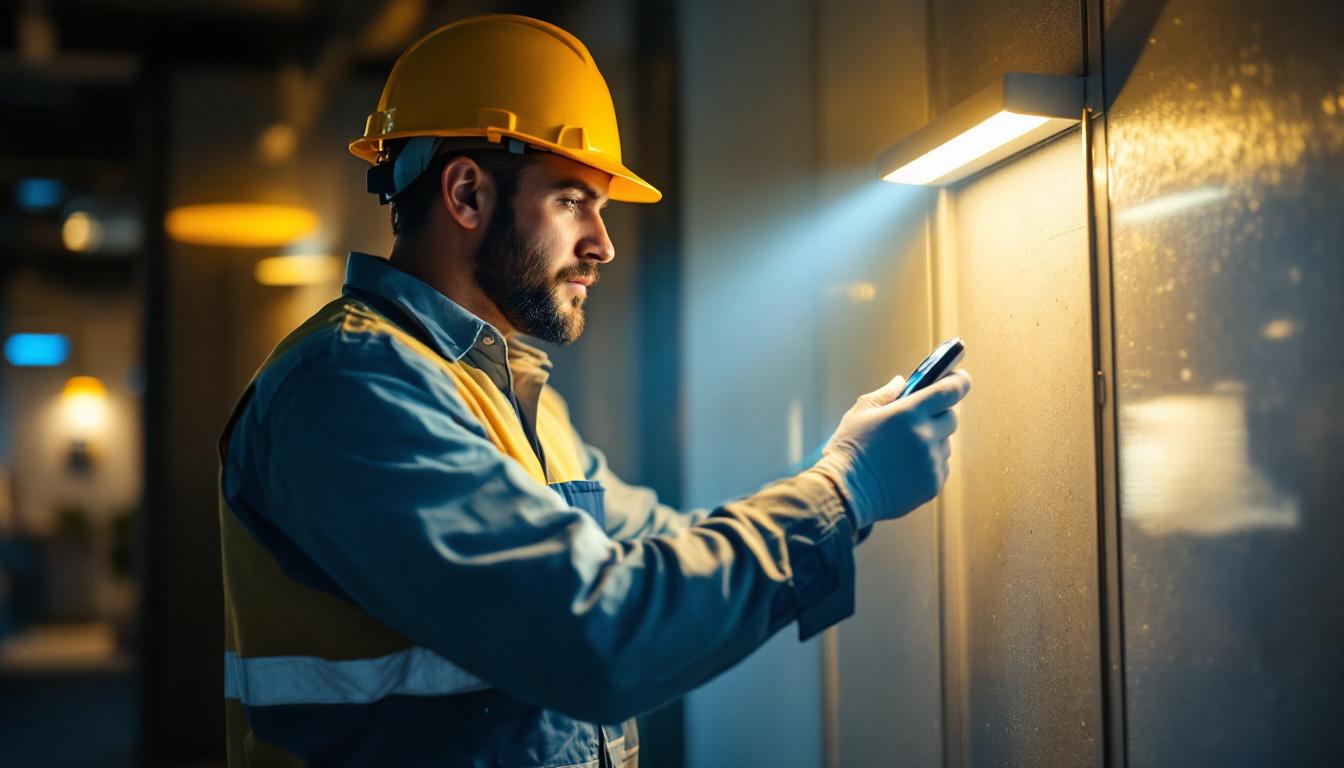
In the world of lighting, particularly within large warehouse settings, the importance of effective training cannot be overstated. A well-trained team can significantly enhance the efficiency of lighting installations, maintenance, and troubleshooting. This article aims to provide an insightful guide on how to train your team in lighting, focusing on best practices, essential skills, and innovative techniques.
Before diving into advanced training techniques, it is crucial for team members to grasp the fundamental concepts of warehouse lighting. This includes understanding different types of lighting fixtures, their applications, and the impact of lighting on productivity and safety. Proper lighting not only enhances visibility but also plays a significant role in reducing accidents and improving overall operational efficiency. A well-lit warehouse can lead to better employee morale, as workers feel more comfortable and focused in their tasks.
Warehouse lighting encompasses a variety of fixtures, each serving distinct purposes. Common types include LED high bays, fluorescent lights, and induction lamps. LED high bays are particularly favored for their energy efficiency and longevity, making them ideal for large spaces. On the other hand, fluorescent lights are often used for their cost-effectiveness, although they may require more frequent replacements. Induction lamps, while less common, offer a longer lifespan and are suitable for environments where maintenance access is limited.
Training should cover the characteristics, benefits, and limitations of each type of fixture. This knowledge enables team members to make informed decisions when selecting lighting solutions for various warehouse applications. Additionally, understanding the latest advancements in lighting technology, such as smart lighting systems that can be controlled remotely or adjusted based on occupancy, can further enhance the efficiency of warehouse operations. Incorporating these modern solutions can lead to significant energy savings and improved adaptability to changing warehouse needs.
Understanding lighting design principles is essential for creating an effective lighting layout. Key concepts include illumination levels, uniformity, and color temperature. Illumination levels refer to the amount of light provided in a space, which should be tailored to the specific tasks performed in the warehouse. Uniformity ensures that light is evenly distributed, reducing shadows and enhancing visibility. This is particularly important in areas where precision tasks are performed, such as packing or quality control stations, where poor lighting can lead to errors.
Color temperature affects the ambiance and functionality of the workspace. For instance, cooler temperatures (5000K-6500K) promote alertness and productivity, while warmer temperatures (2700K-3000K) create a more relaxed environment. Training should emphasize these principles to help team members design optimal lighting solutions. Furthermore, it is beneficial to consider the psychological effects of lighting on workers; studies have shown that appropriate lighting can reduce fatigue and increase overall job satisfaction. By fostering an understanding of how lighting influences both performance and well-being, team members can create a more conducive working environment that supports both safety and productivity.
While theoretical knowledge is vital, hands-on training is equally important. Engaging team members in practical exercises can reinforce their understanding and build confidence in their skills. This approach not only solidifies their learning but also creates a more interactive and engaging training environment, which can lead to better retention of information and techniques.
Conducting installation workshops allows team members to practice their skills in a controlled environment. These workshops should cover the entire installation process, from planning and layout to mounting fixtures and wiring. By working together, team members can learn from one another and develop teamwork skills crucial for successful installations. The collaborative nature of these workshops encourages participants to share tips and tricks they’ve learned from past experiences, enriching the overall training experience.
During these workshops, it is beneficial to incorporate troubleshooting scenarios. This prepares team members to handle unexpected challenges that may arise during actual installations. Encouraging questions and discussions during these sessions can further enhance learning outcomes. Moreover, inviting experienced professionals to share their insights and real-life stories can provide invaluable context, making the training more relatable and impactful. This blend of practical exercises and expert knowledge creates a comprehensive learning atmosphere that empowers team members.
Incorporating simulation and role-playing activities can provide a dynamic training experience. For example, team members can take turns acting as the installer and the client, allowing them to understand both perspectives. This approach fosters empathy and improves communication skills, which are essential when working with clients. Role-playing can also help team members practice their negotiation skills, as they navigate client expectations and project constraints in a safe environment.
Additionally, simulations can include scenarios such as emergency lighting failures or equipment malfunctions. By practicing responses to these situations, team members can develop quick problem-solving skills that are invaluable in real-world settings. These simulations can be enhanced with the use of technology, such as virtual reality tools, to create immersive experiences that mimic real-life challenges. This not only makes the training more engaging but also allows team members to experiment with different strategies and solutions without the risk of real-world consequences. The combination of hands-on practice and innovative training methods ensures that team members are well-prepared for any situation they may encounter on the job.
Safety is paramount in any lighting installation or maintenance task. Training should prioritize safety protocols to ensure that all team members understand the risks associated with working in warehouse environments and how to mitigate them.
Electrical safety training is a critical component of any lighting training program. Team members should be educated on the proper handling of electrical equipment, including the use of personal protective equipment (PPE) such as gloves and goggles. They should also be familiar with lockout/tagout procedures to prevent accidental energization of equipment during maintenance.
Regular safety drills can reinforce these protocols, ensuring that team members are prepared for emergencies. Understanding the importance of safety not only protects team members but also enhances overall project efficiency.
In addition to electrical safety, training should address ergonomics and safe lifting techniques. Warehouse environments often require team members to lift heavy fixtures and equipment, which can lead to injuries if not done correctly. Training should include demonstrations of proper lifting techniques, emphasizing the importance of using legs rather than the back to lift heavy objects.
Encouraging team members to take breaks and use mechanical aids when necessary can further reduce the risk of injury. A focus on ergonomics contributes to a healthier workforce and can lead to increased productivity.
In today’s digital age, leveraging technology can enhance training programs significantly. Various tools and platforms can facilitate learning and improve engagement among team members.
Online learning platforms offer flexibility and accessibility, allowing team members to learn at their own pace. These platforms can host a range of training materials, including videos, quizzes, and interactive modules. Incorporating multimedia elements can cater to different learning styles and keep team members engaged.
Additionally, online platforms can facilitate remote training sessions, making it easier to onboard new team members or provide ongoing education without the need for in-person meetings.
Virtual reality technology is emerging as a powerful tool for training in various industries, including lighting. VR training can simulate real-world scenarios, allowing team members to practice their skills in a safe and controlled environment. This immersive experience can enhance retention and understanding of complex concepts.
For example, team members can navigate a virtual warehouse, identifying optimal lighting placements and troubleshooting issues without the risks associated with physical installations. As technology continues to evolve, integrating VR into training programs may become increasingly beneficial.
Training should not be a one-time event; it should foster a culture of continuous learning within the team. Encouraging team members to seek out additional training opportunities can enhance their skills and keep them updated on industry trends.
Encouraging team members to pursue certifications in lighting design or electrical safety can provide them with a competitive edge. Many organizations offer courses that cover advanced topics and emerging technologies in the lighting industry. Supporting team members in their pursuit of these certifications demonstrates a commitment to their professional growth.
Additionally, attending industry conferences and workshops can expose team members to new ideas and innovations. These events provide networking opportunities and insights into best practices from other professionals in the field.
Regular feedback and performance evaluations are essential for identifying areas for improvement and recognizing achievements. Implementing a structured feedback system can help team members understand their strengths and weaknesses, allowing them to focus on specific skills that need development.
Encouraging open communication fosters a supportive environment where team members feel comfortable discussing challenges and seeking guidance. This collaborative approach can lead to continuous improvement and a more cohesive team.
Training a team in lighting, particularly in a warehouse environment, is a multifaceted process that requires a blend of theoretical knowledge, practical skills, and a commitment to safety. By focusing on the fundamentals of lighting, implementing hands-on training techniques, emphasizing safety protocols, and leveraging technology, lighting contractors can cultivate a highly skilled and efficient workforce.
Furthermore, fostering a culture of continuous learning ensures that team members remain engaged and up-to-date with industry advancements. Investing in training not only enhances team performance but also contributes to the overall success of lighting projects. Ultimately, a well-trained team is the backbone of any successful lighting contractor, capable of delivering high-quality installations and exceptional service.
Now that you understand the importance of training your team in the intricacies of warehouse lighting, it’s time to equip them with the highest quality lighting products. At LumenWholesale, we offer an exceptional range of spec-grade lighting solutions that meet your project’s needs without breaking the bank. Say goodbye to local distributor markups and hello to our unbeatable wholesale prices, comprehensive selection, and the convenience of free shipping on bulk orders. Elevate your lighting projects with the reliability and performance that LumenWholesale provides. Discover wholesale lighting at the best value and make your next installation a shining success.

Discover the truth about fluorescent bulbs and their heat emissions, and learn how lighting contractors can leverage this knowledge to enhance their projects.

Discover the crucial role UV light room sanitizers play in modern lighting solutions.

Discover effective strategies for training your team in lighting with “Long Neck Light.” This article delves into innovative techniques and practical tips to enhance your team’s skills, ensuring they master the art of illumination for any setting.

Discover everything lighting contractors need to know about motion detector switches for LED lights, including compliance tips, benefits, and industry insights—boost your projects today!.